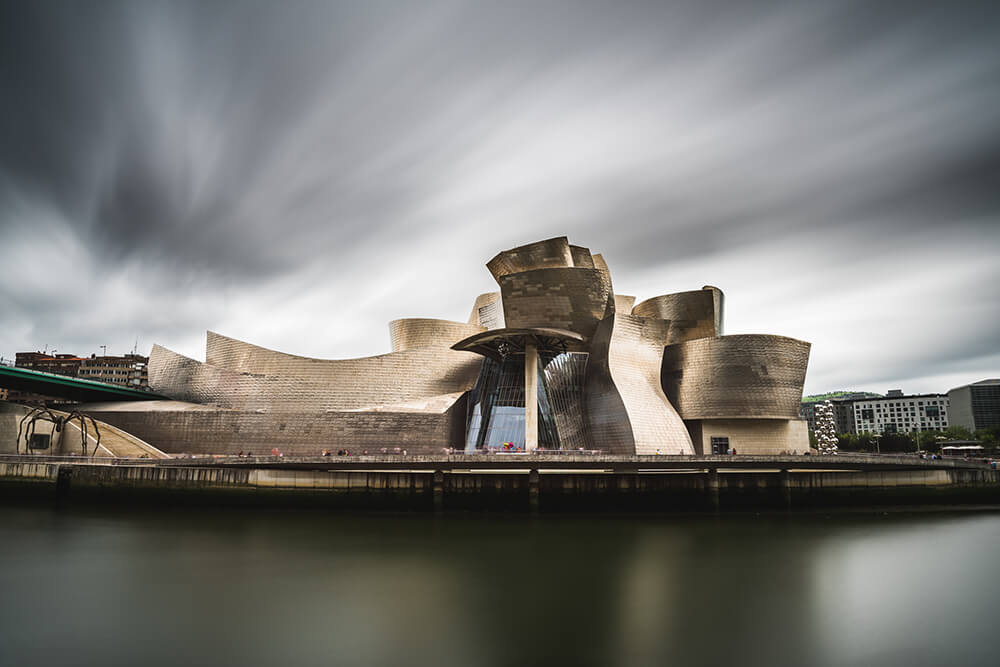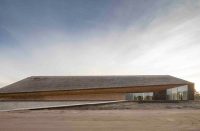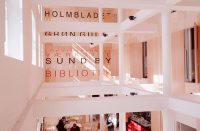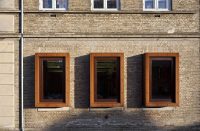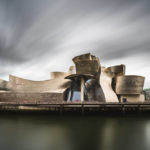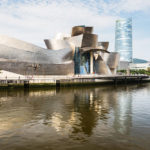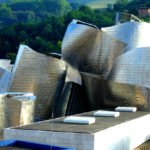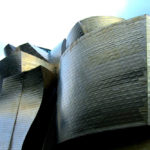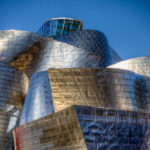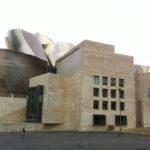Architect(s): Gehry Partners
Address: Abandoibarra Etorb., 2, BILBAO, Spain
Latitude/Longitude: 43.268651,-2.934014
The museum of Guugenheim in Bilbao had already begun to make news long before it opened its doors on October 19, 1997. The previous four years of its construction, the museum was visited by numerous artists, architects, journalists, politicians, filmmakers, and historians that anticipated the success of the venture. Frank Gehry’s limestone, glass, and titanium building was hailed by architect Philip Johnson as “the greatest building of our time” and assumptions were challenged about art museum and programming by the pioneering collaboration between the Solomon R. Guggenheim Foundation and Basque authorities.
Location
Bilbao is the fourth largest city in Spain and also one of its greatest ports, as a center for manufacturing, shipping, and commerce. In the late 1980s the Basque authorities embarked on an ambitious redevelopment program for the city. By 1991, with new designs for an airport, a subway system, and a footbridge, among other important projects by major international architects such as Norman Foster, Santiago Calatrava, and Arata Isozaki, the city of Bilbao had plans to construct a cultural facility of world fame. Thomas Krens, Director of the Solomon R. Guggenheim Foundation, met repeatedly with officials, signing a preliminary agreement to bring a new Guggenheim Museum to Bilbao when he was invited by Basque Government and the Diputación Foral de Bizkaia in April and May 1991.
The building
California-based architect Gehry was selected after an architectural competition. The architect was known for his use of unorthodox materials and inventive forms, and his sensitivity to the urban environment. Features that embrace both the identity of the Guggenheim Museum and its new home in the Basque Country were ultimately included in Gehry’s proposal for the site on the Nervion River. The building’s glass atrium refers to The famous rotunda of Frank Lloyd Wright’s New York Guggenheim is what the glass atrium of the building refers to, and its largest gallery is traversed by Bilbao’s Puente de La Salve. That is a vehicular bridge serving as one of the main gateways to the city. For overseeing the development of the project and to supervise the construction, Juan Ignacio Vidarte, Director General of the Guggenheim Bilbao was appointed in 1992. Groundbreaking took place in 1993 and in 1997 a gala dinner and reception, attended by an international audience and Spain’s Queen Sofia and King Juan Carlos I, celebrated the inauguration of the Guggenheim Museum Bilbao.

